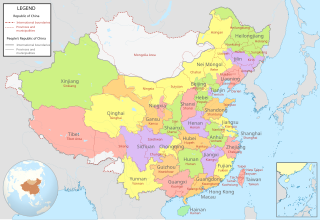
Syringa is a genus of 12 currently recognized species of flowering woody plants in the olive family or Oleaceae called lilacs. These lilacs are native to woodland and scrub from southeastern Europe to eastern Asia, and widely and commonly cultivated in temperate areas elsewhere.
Sanhe may also refer to these places in China:
The 10th National Games of the People's Republic of China was a multi-sport event that was held in Nanjing City, Jiangsu Province, from 12–23 October 2005.
Gucheng, formerly romanized as Ku Ch'eng, may refer to the following places in China:

Spodiopogon is a genus of Asian plants in the grass family.
Xinglong may refer to the following locations in China:
The 2000 Chinese census, officially the Fifth National Population Census of the People's Republic of China, was conducted by the government of the People's Republic of China with 1 November 2000 as its zero hour. The total population was calculated as 1,295,330,000. The census also covered population growth, number of households, sex, age, ethnicity, educational attainment, and urban and rural population.
The history of the administrative divisions of China is covered in the following articles:

The history of the administrative divisions of China after 1949 refers to the administrative divisions under the People's Republic of China. In 1949, the communist forces initially held scattered fragments of China at the start of the Chinese Civil War. By late 1949, they controlled the majority of mainland China, forcing the Republic of China government to relocate to Taiwan.
Eupoecilia amphimnesta is a species of moth of the family Tortricidae. It is found in China, Taiwan, India, Japan, Korea, Mongolia, Russia and Europe.

Spilarctia subcarnea is a moth in the family Erebidae. It was described by Francis Walker in 1855. It is found in Nepal, China, the Russian Far East, Korea, Japan and Taiwan.
Events in the year 1956 in China. The country had an estimated population of 620 million people.
Events in the year 1961 in China. The country had an estimated population of 695 million people.

The national archaeological park of China is a designation created by the State Administration of Cultural Heritage (SACH) in 2009 to preserve and present large-scale archaeological sites. National archaeological parks must have previously been designated as Major Historical and Cultural Sites Protected at the National Level, and are considered to have high historical, cultural, and academic value. They include ancient settlements, cities and towns, palaces, temples and caves, engineering and manufacturing sites, and mausoleums and cemeteries. Many parks also have on-site museums.







